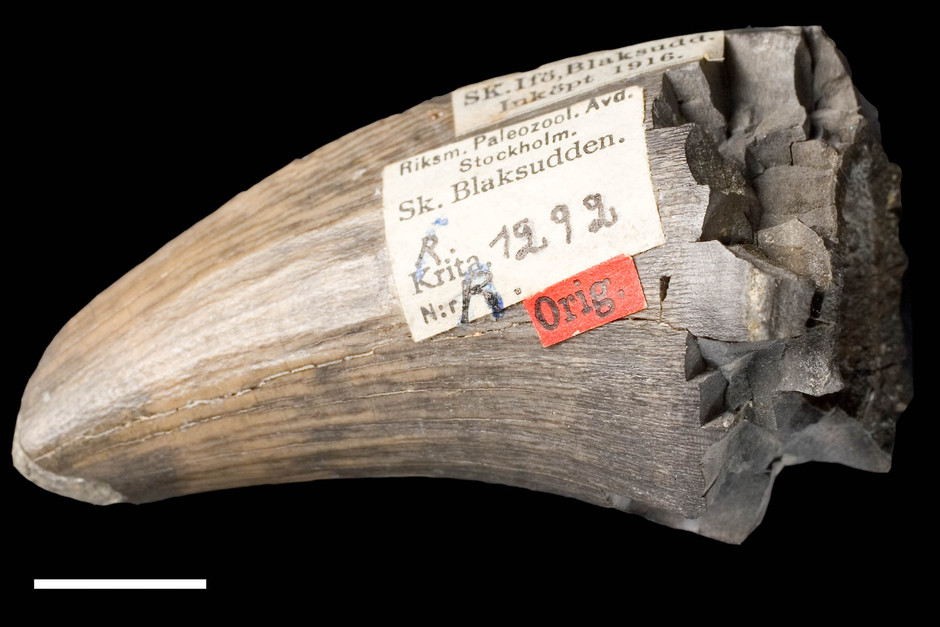During the latter part of the Cretaceous period (approximately 70 million years ago), the Kristianstad Basin formed a "tropical" archipelago with diverse marine life and with dinosaurs roaming the continent and islands.
At the Palaeobiology department, the museum has extensive collections from this part of Skåne. Our fossil vertebrate collections amount to almost 1900 specimens, most of which are registered and available in the museum's online database.
Collections from the Cretaceous of Skåne are mainly represented by mosasaurs (Mosasaurus, Tylosaurus etc.) and plesiosaurs (Scanisaurus) where teeth, vertebrae and fins are the most common elements. These animals were the top predators of the oceans.
Shark teeth are also common, as are parts of other fish and elements of turtles. Among the more unusual fossils are birds (Hesperornis) and crocodiles.
The picture at the top shows a tooth from Mosasaurus hofmanni from Blaksudden in Skåne. Photo: Mikael Axelsson.

